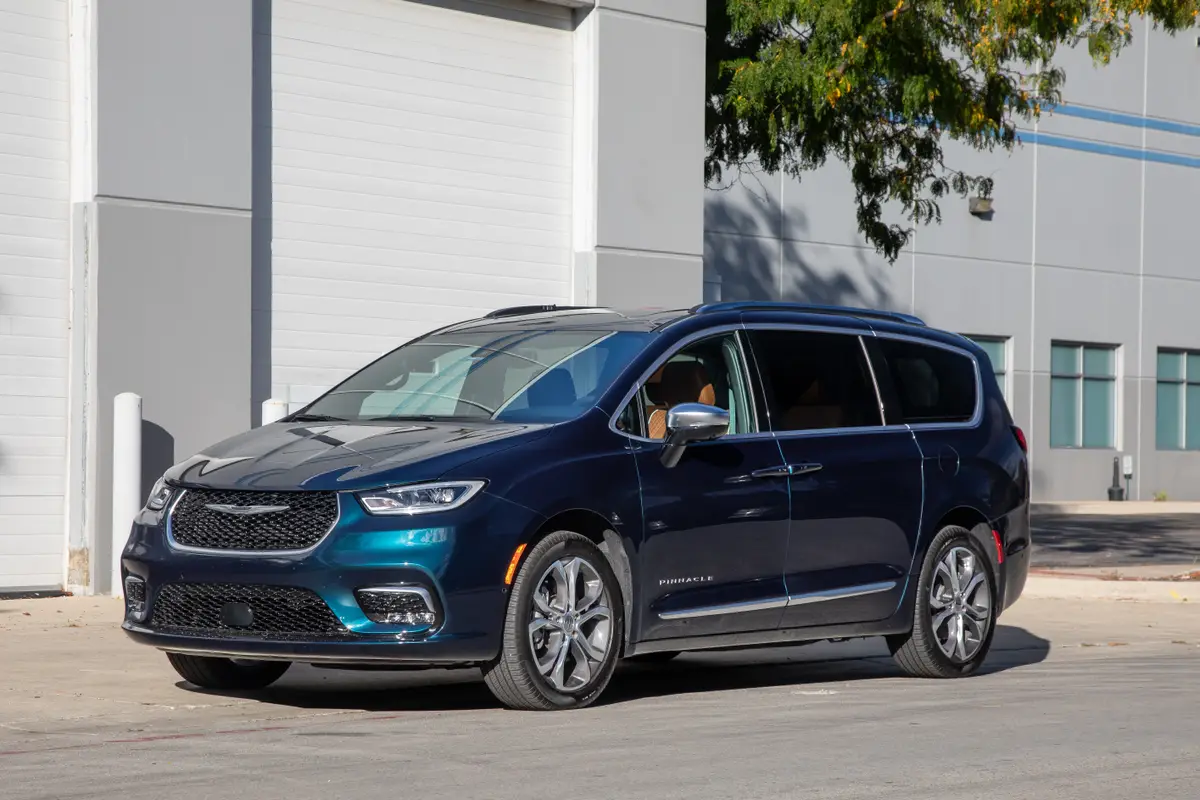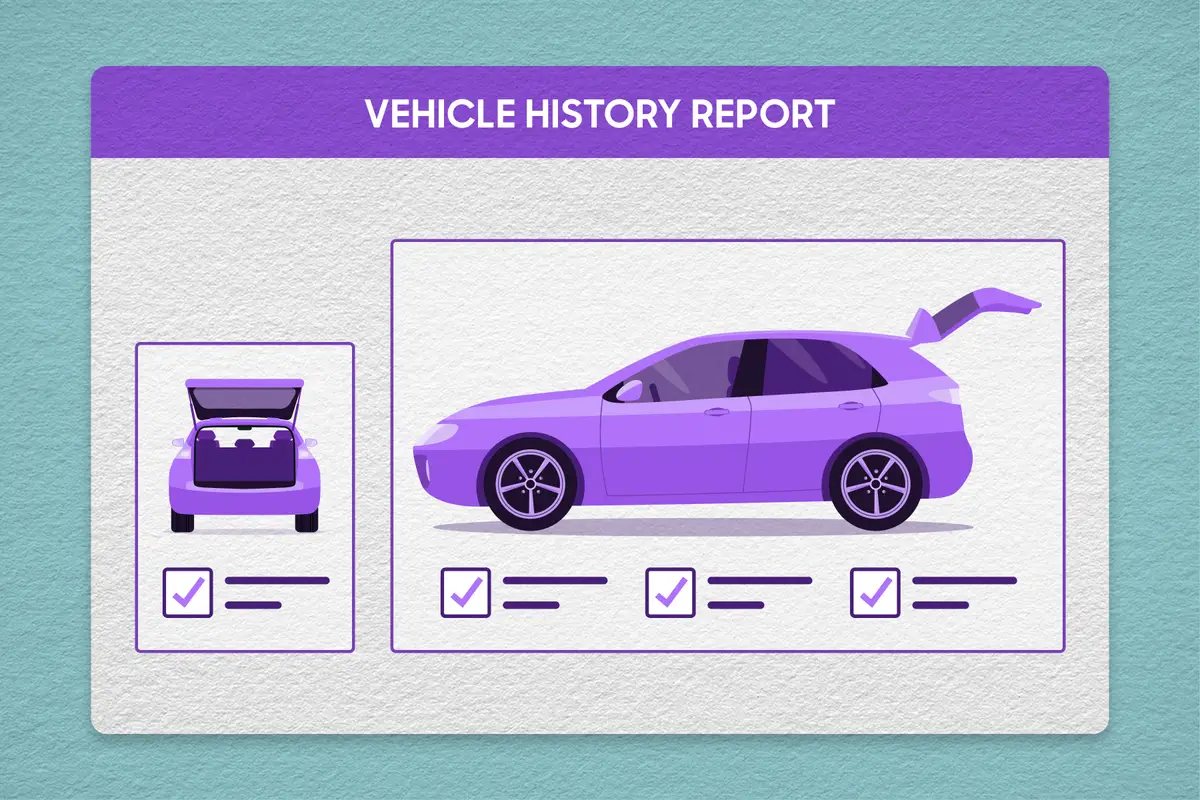2026 Nissan Leaf Goes Crossover, Finally Gets the Range It Deserves


- Competes with: Kia Niro EV, Hyundai Kona Electric
- Looks like: An Easter egg with Z-like taillights
- Powertrains: 174- or 214-horsepower electric motor; 52- or 75-kilowatt-hour battery; front-wheel drive
- Release date: Fall 2025
For the 2026 model year, the Nissan Leaf ditches its small hatchback form to become a crossover. While it’s always been a solid electric vehicle for budget commuters, this latest version finally offers the kind of range you’d feel more comfortable taking on a longer road trip, and its specs finally feel up to date and competitive again with other EVs.
Related: Here Are the 11 Cheapest Electric Vehicles You Can Buy
What Are the 2026 Nissan Leaf’s Powertrain Specs and Range?
The next-generation Leaf’s overhauled powertrain combines the electric motor, inverter and gearing into one unit, and Nissan claims it’s quieter and smoother than its predecessor. The 2026 Leaf comes with two options for its powertrain. The base S variant (which will be released at a later date) gets a 130-kilowatt electric motor that works with a 52-kilowatt-hour battery; it’s capable of pumping out 174 horsepower and 254 pounds-feet of torque. The higher S+, SV+ and Platinum+ trims will be available at launch, however, and get a 160-kW motor and 75-kWh battery good for 214 hp and 261 pounds-feet.
The biggest story is the Leaf’s increased range. While we’re still waiting for an estimate on the entry-level S variant, Nissan’s own figures for the higher S+, SV+ and Platinum+ trims are solid, at 303, 288 and 259 miles, respectively (official EPA ratings are not yet available). That fixes the main complaint that we had with the current Leaf, whose EPA range estimates of 149 and 212 miles (depending on trim level) feel like they’re stuck in the past compared to the current state of EV development.
Those longer range figures are helped not just by powertrain innovations, but by the full redesign of the Leaf’s exterior, which drops the coefficient of drag down from the current model’s 0.29 figure to 0.26. A subtle liftgate spoiler, concealed rear door handles and Nissan’s first flush motorized front door handles (which pop out when the vehicle is unlocked) all help reduce drag and increase range.
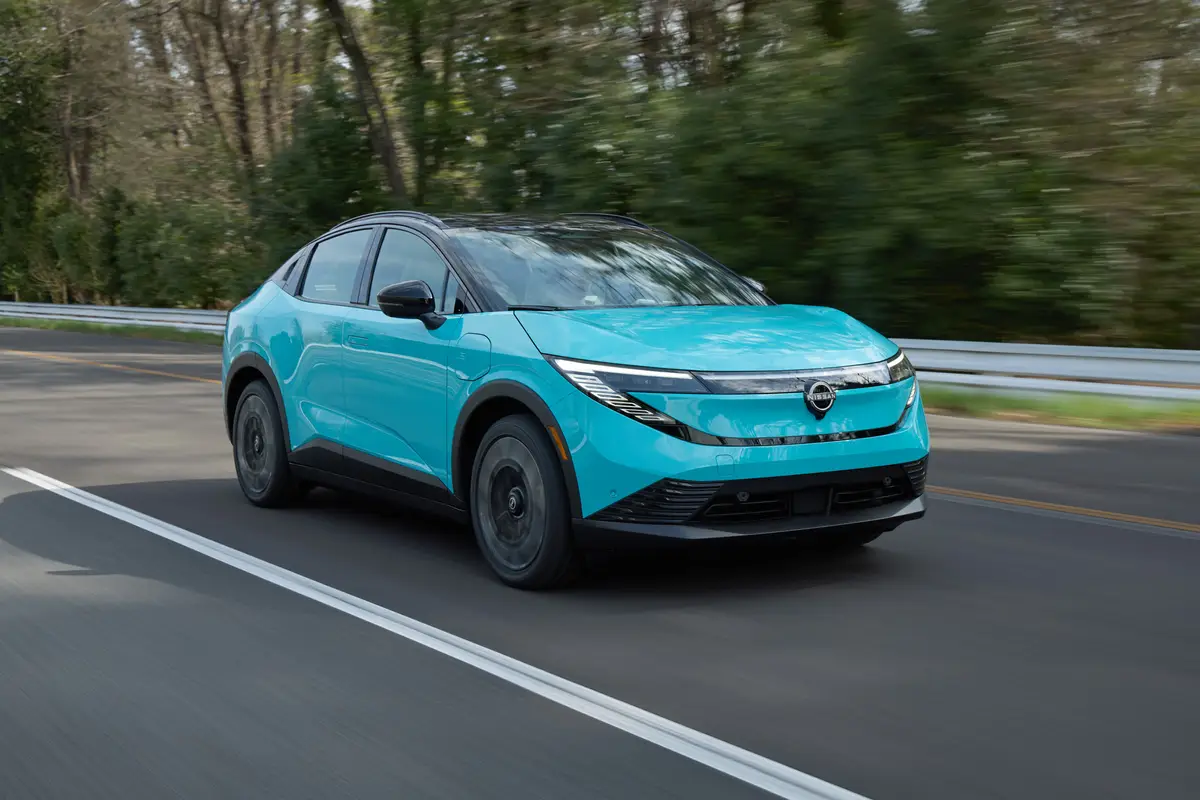
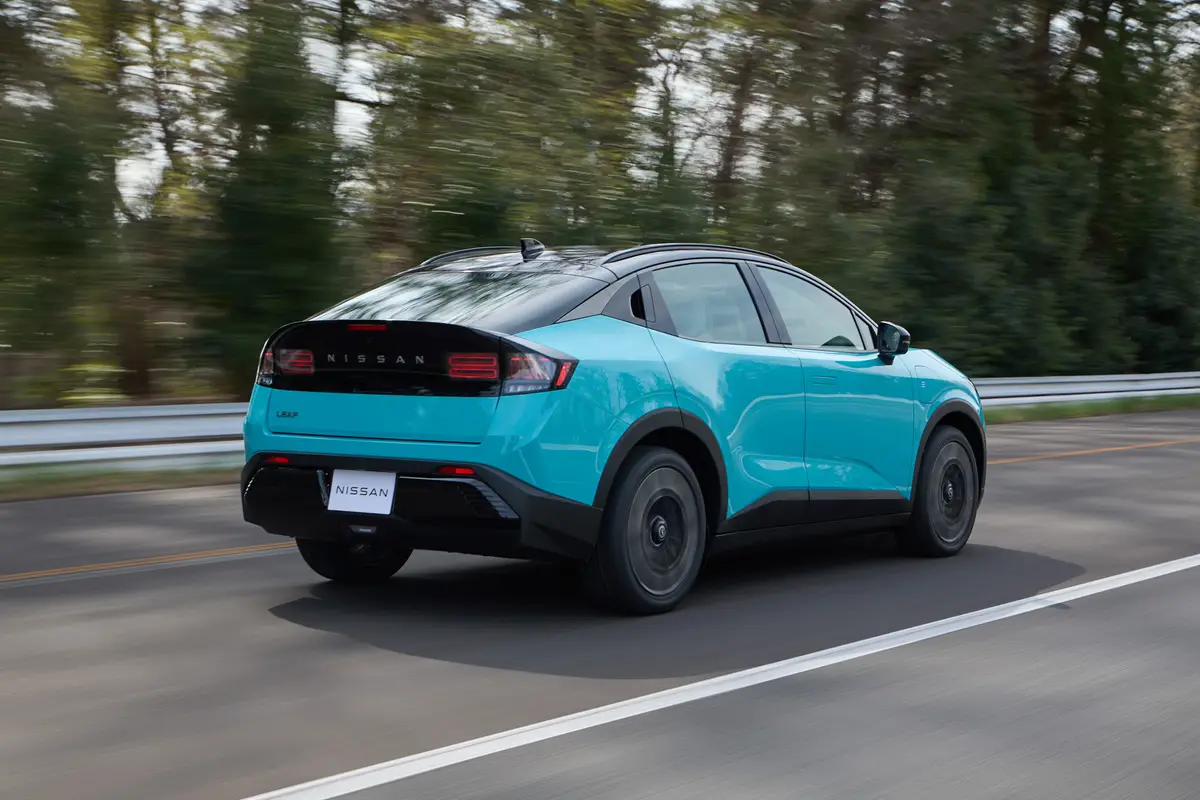
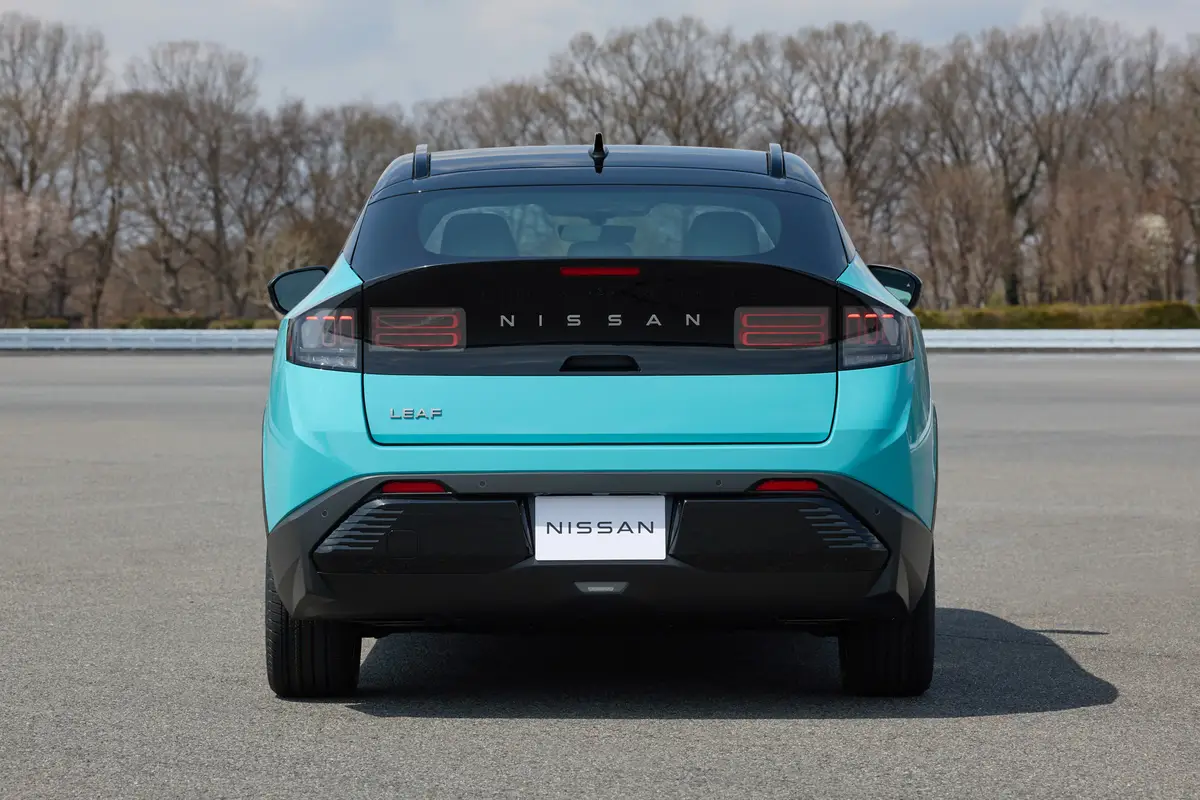
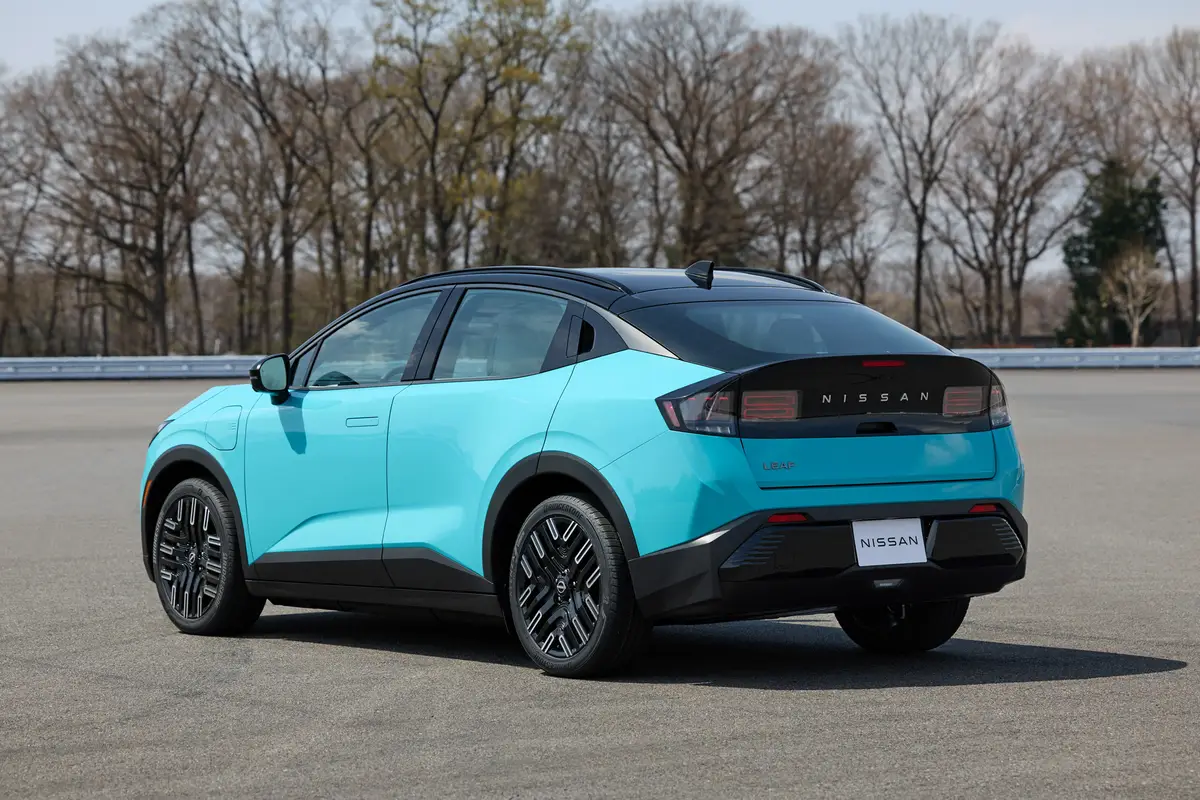
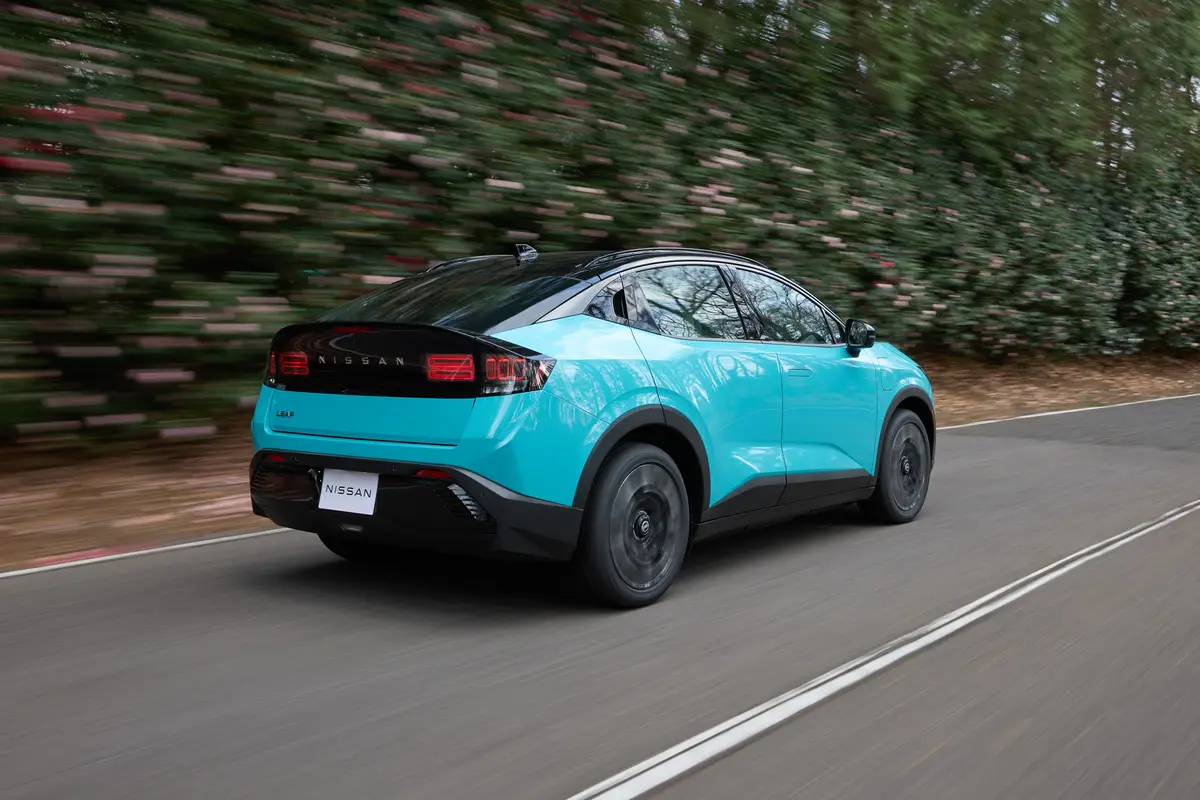
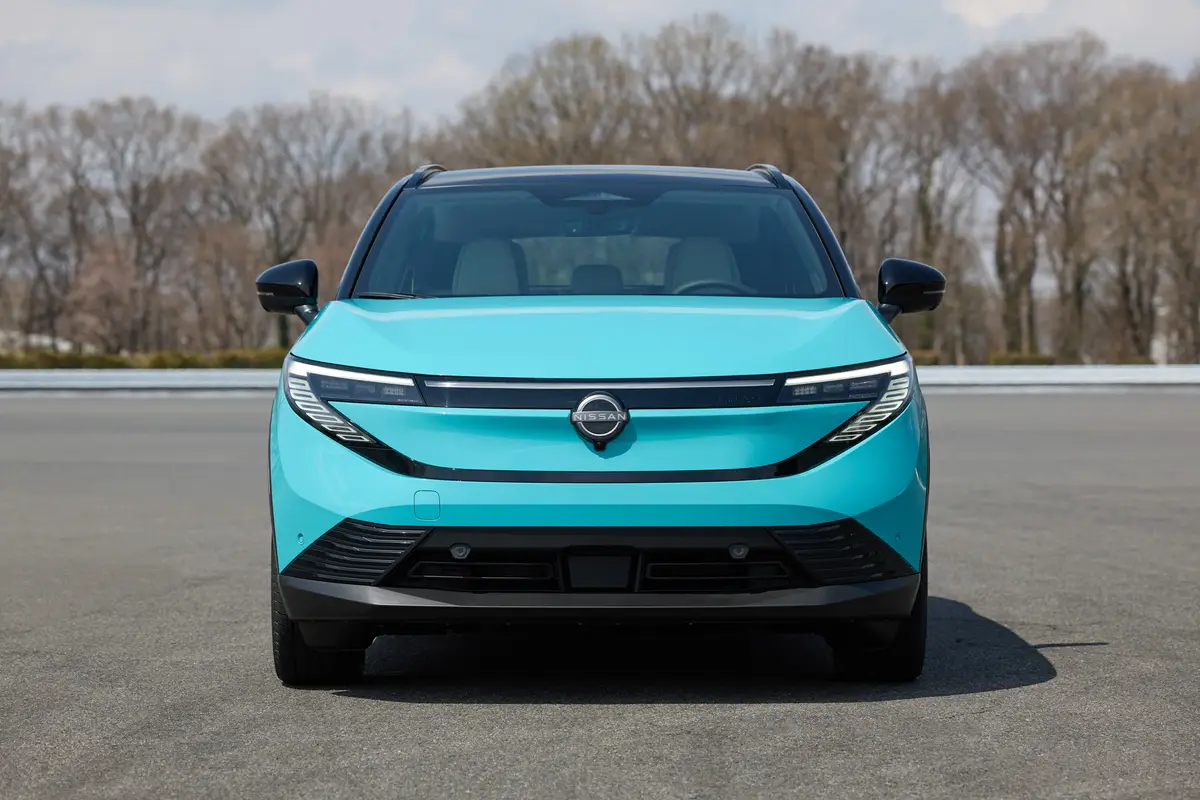

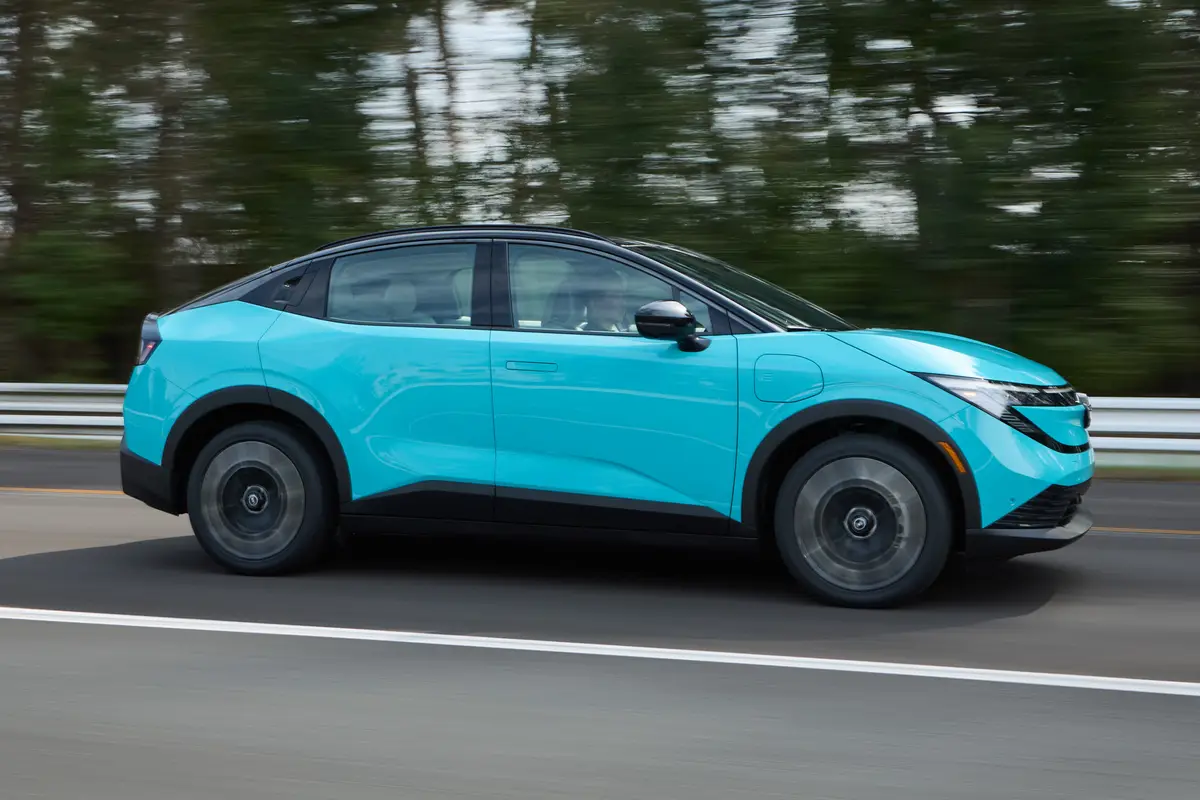
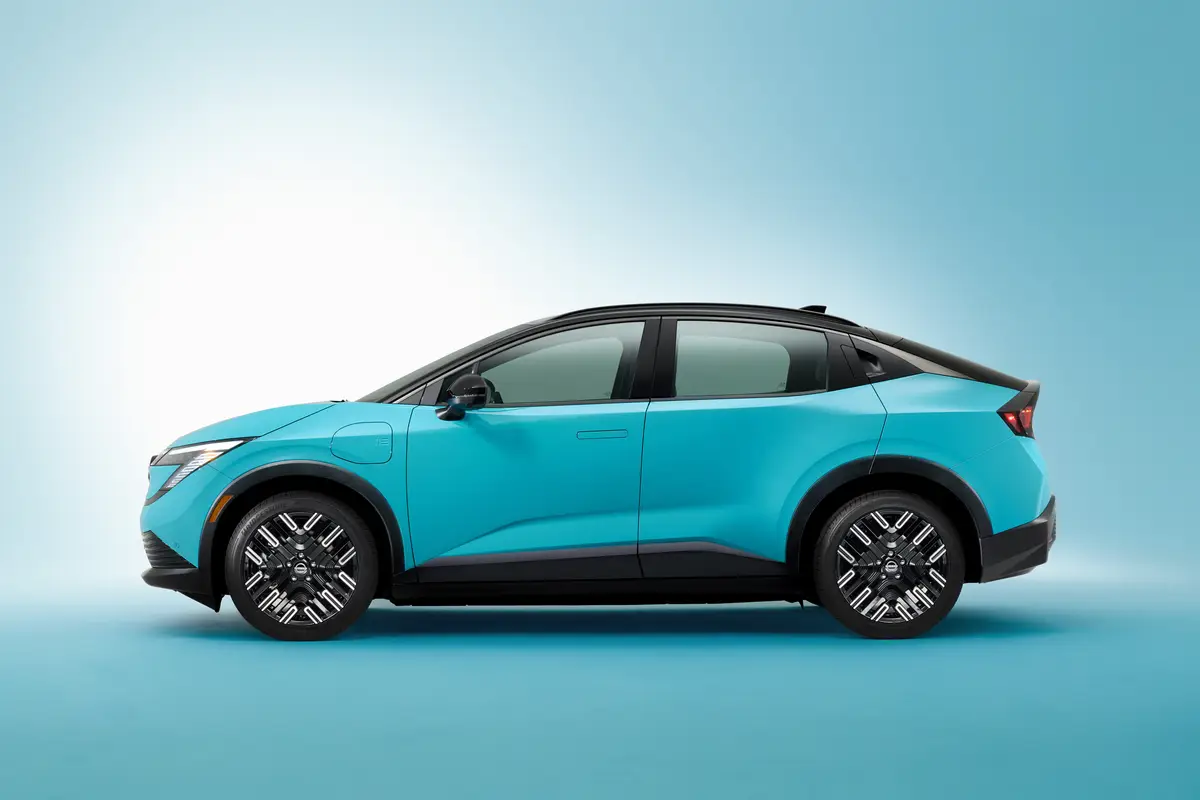

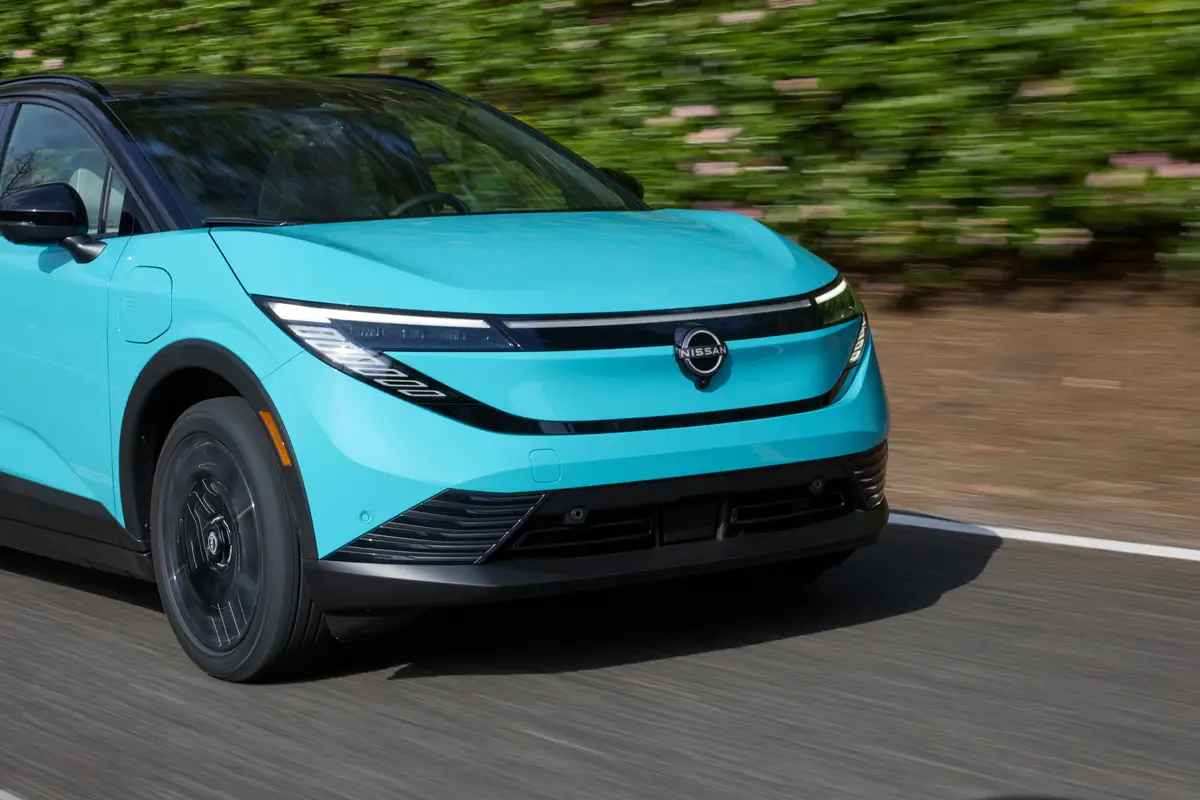
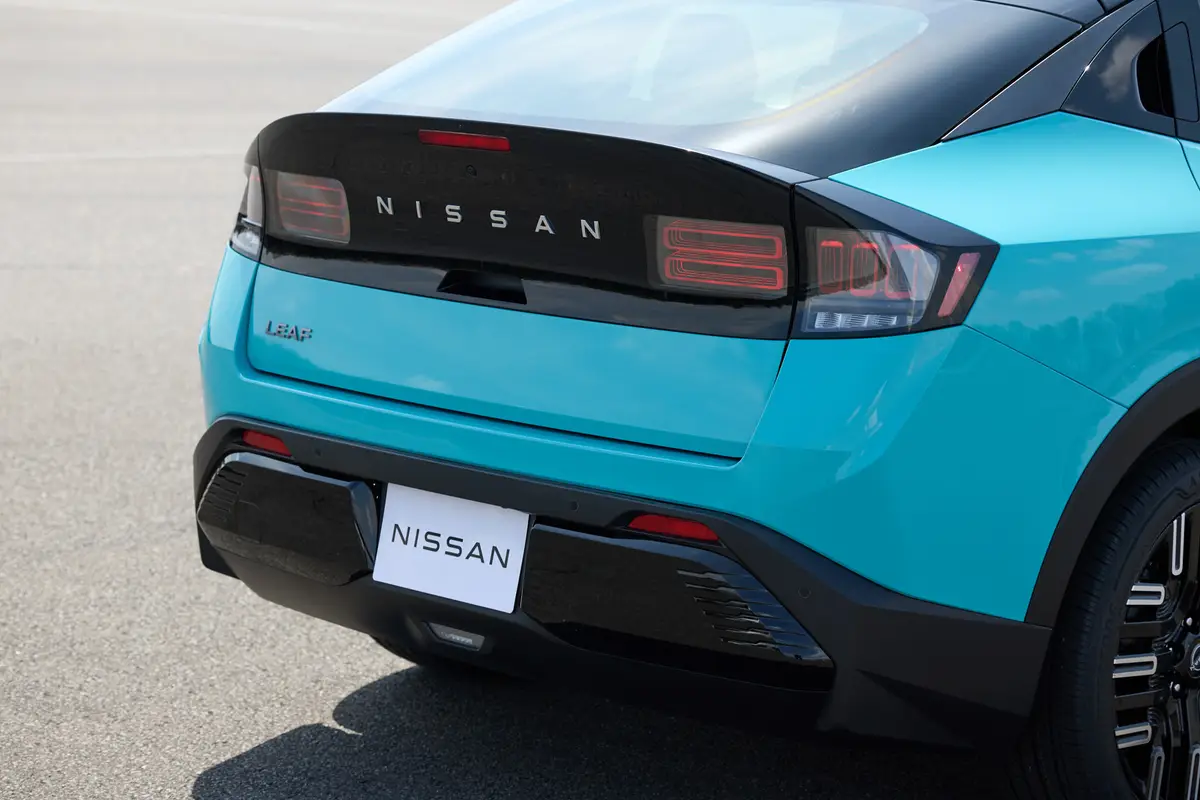
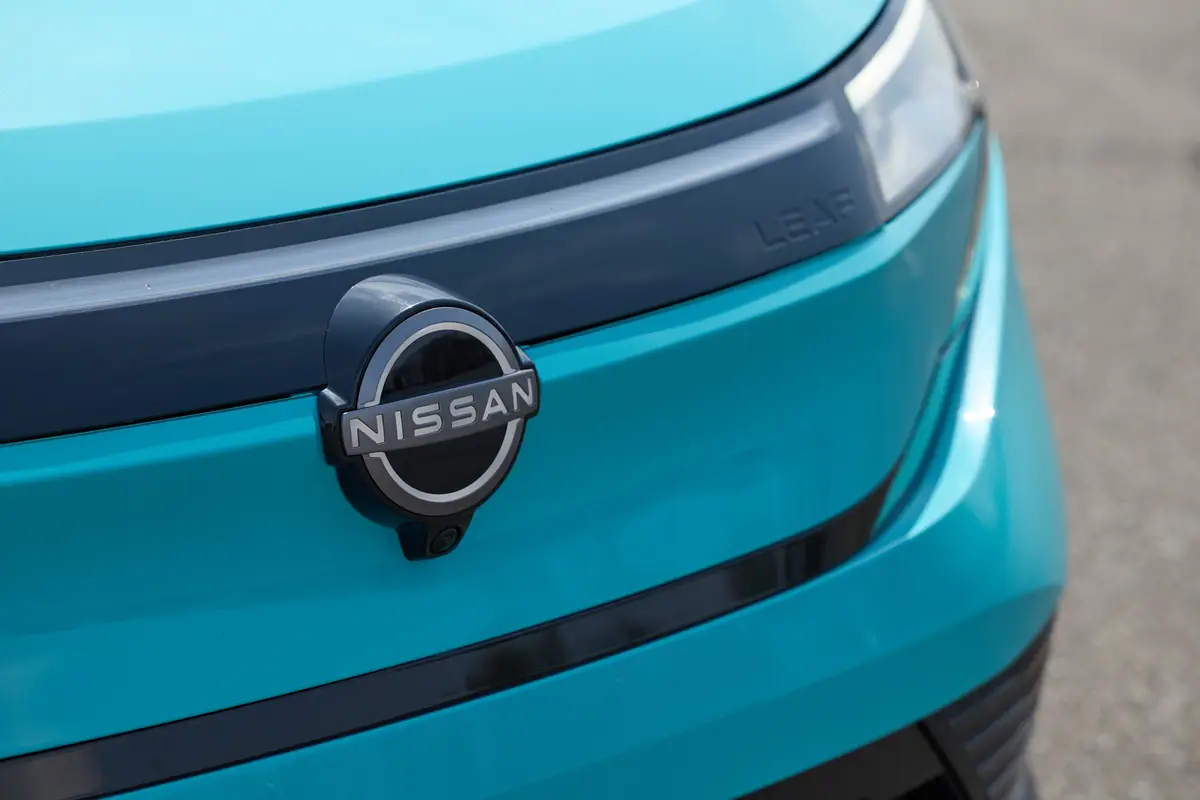

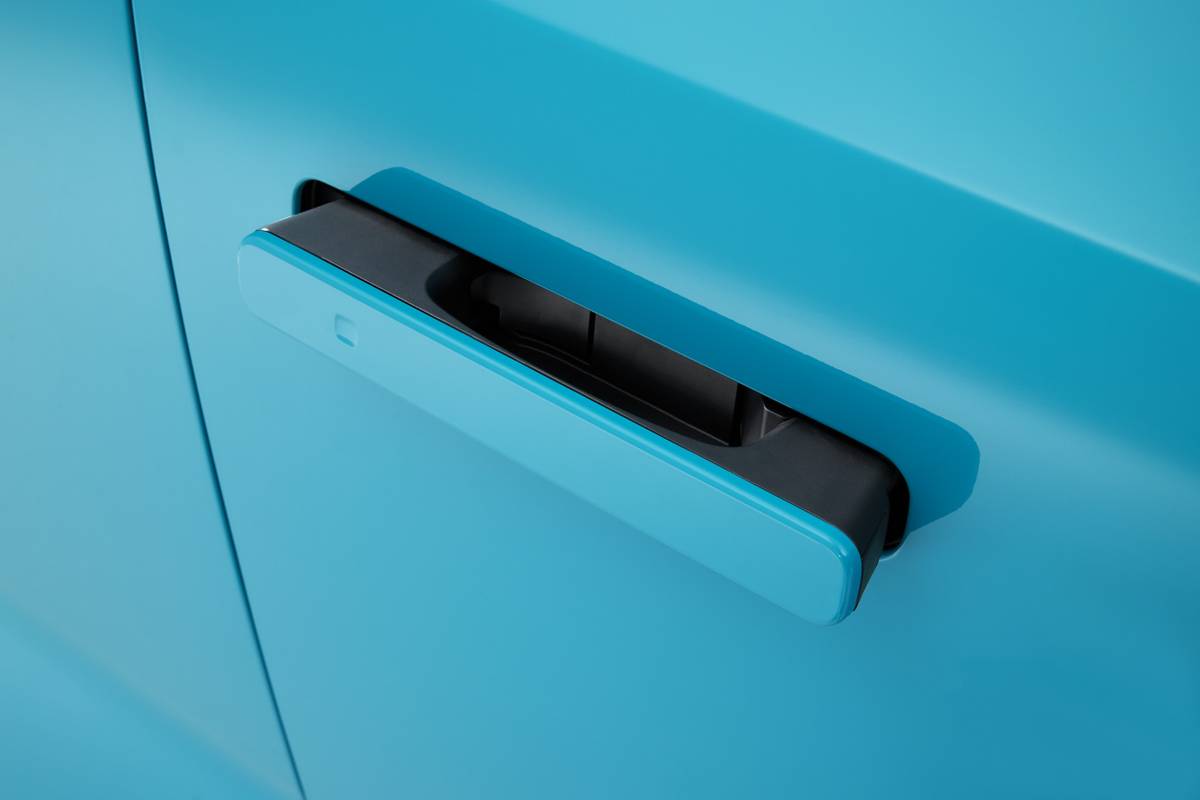
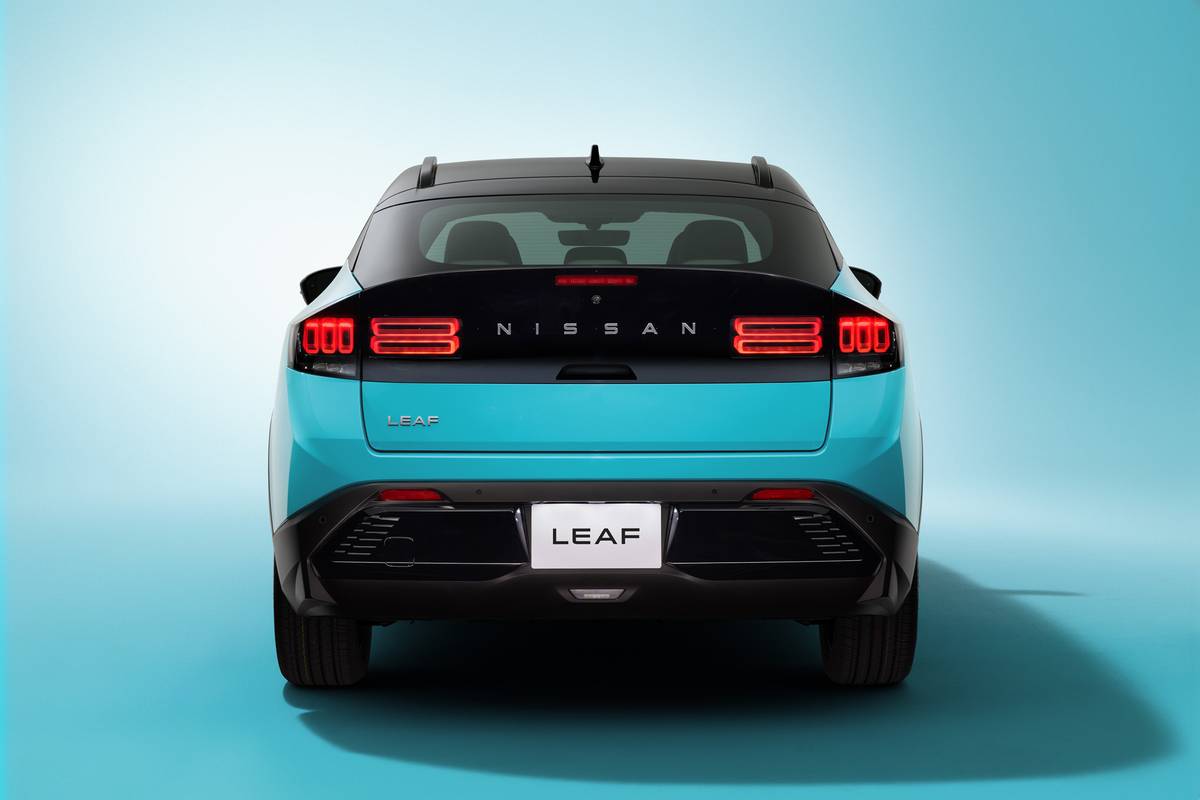

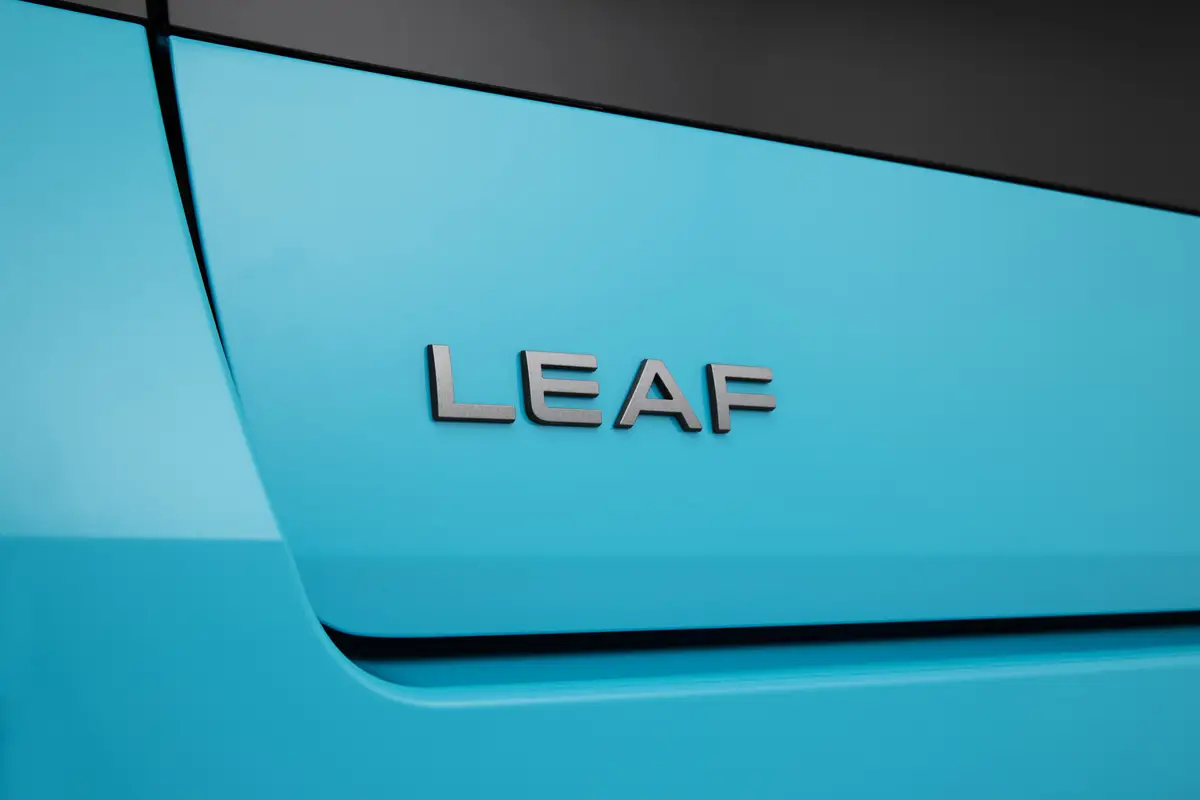
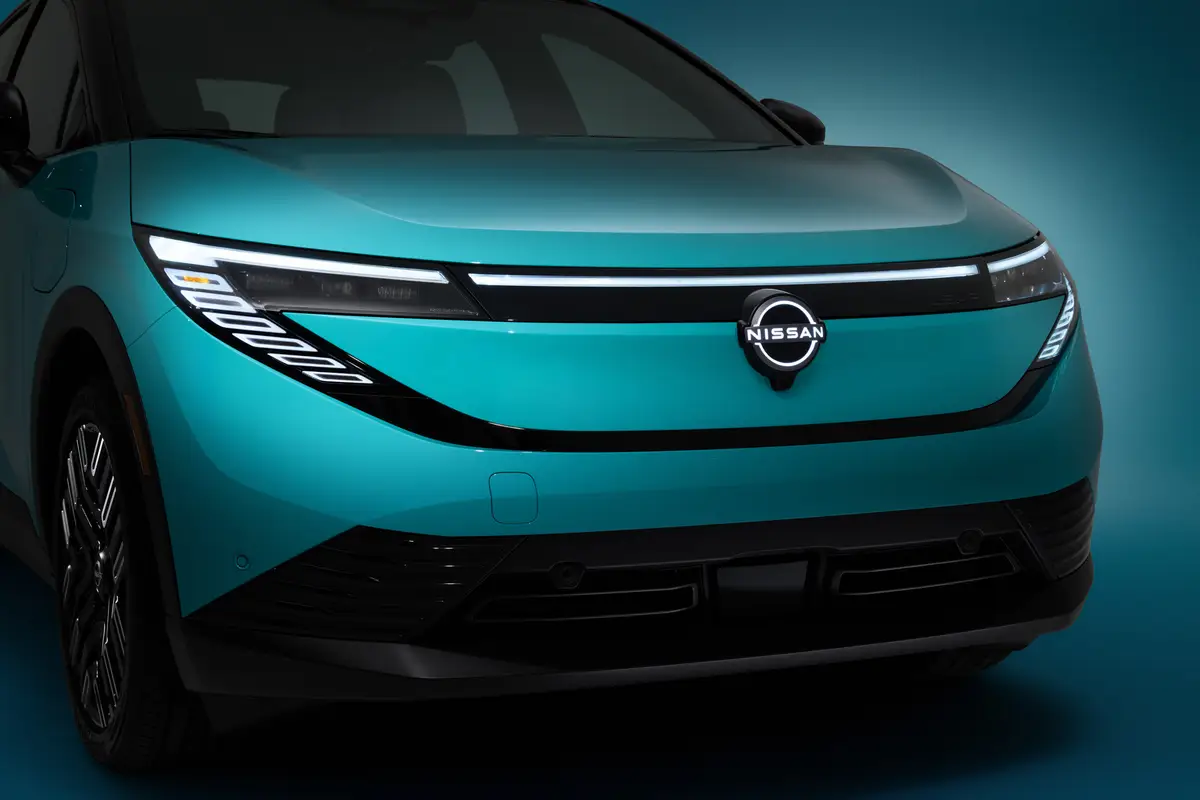
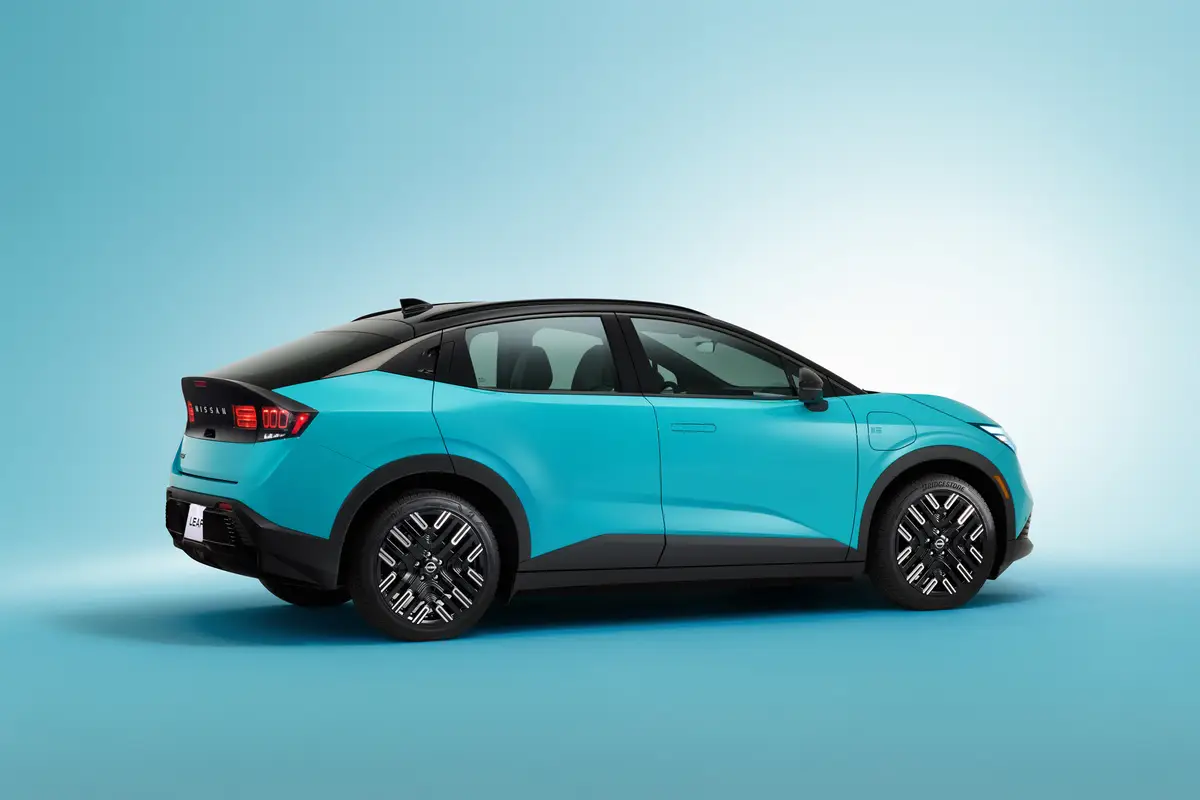
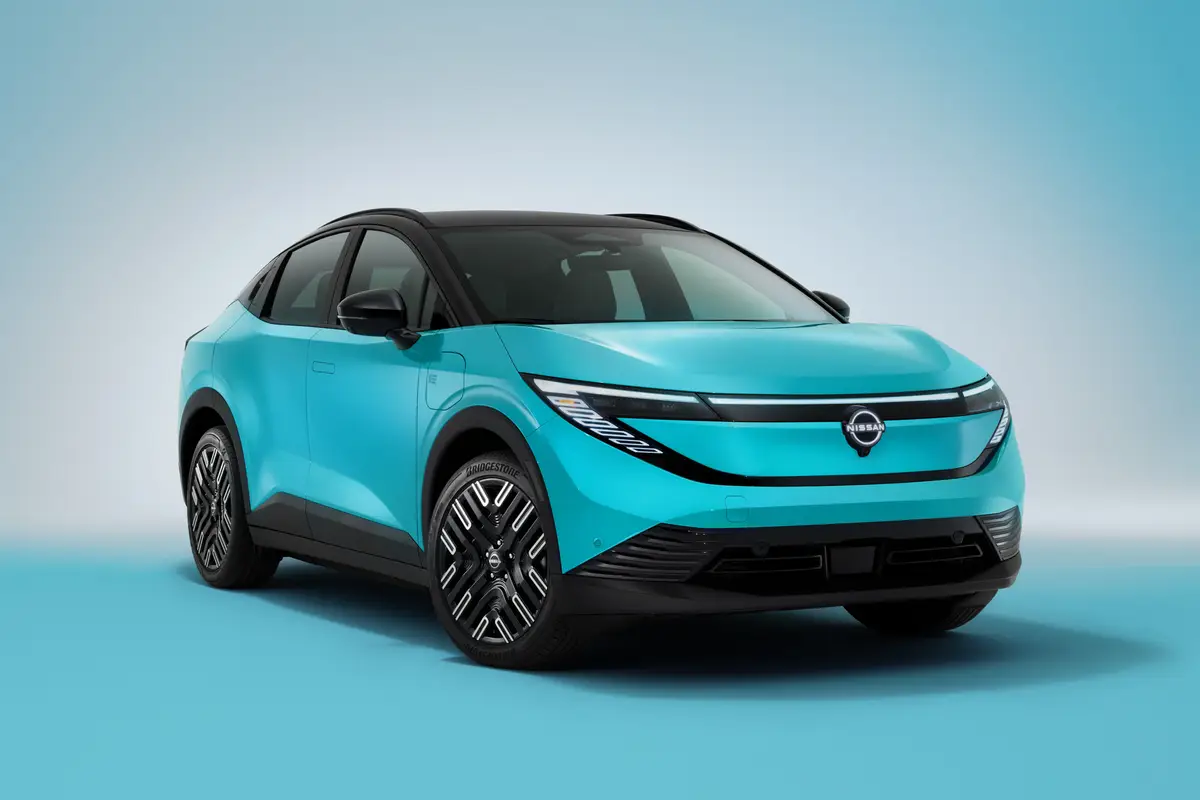
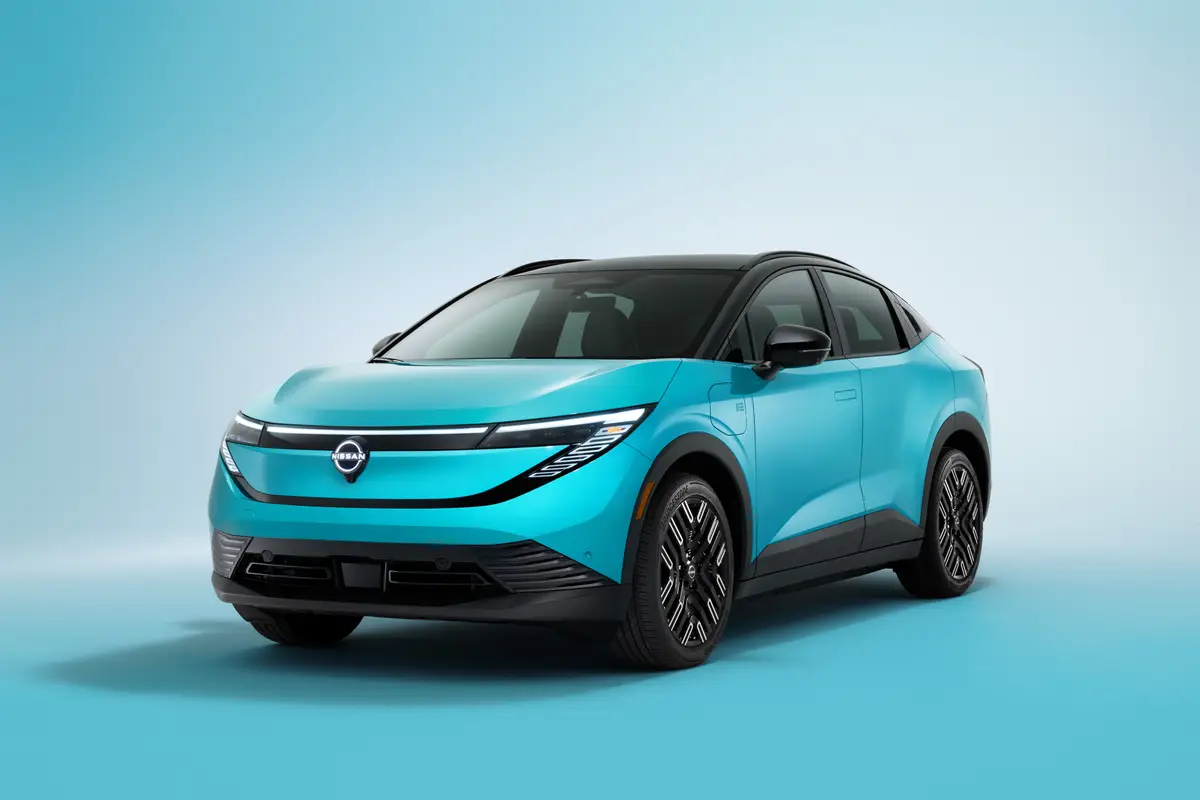
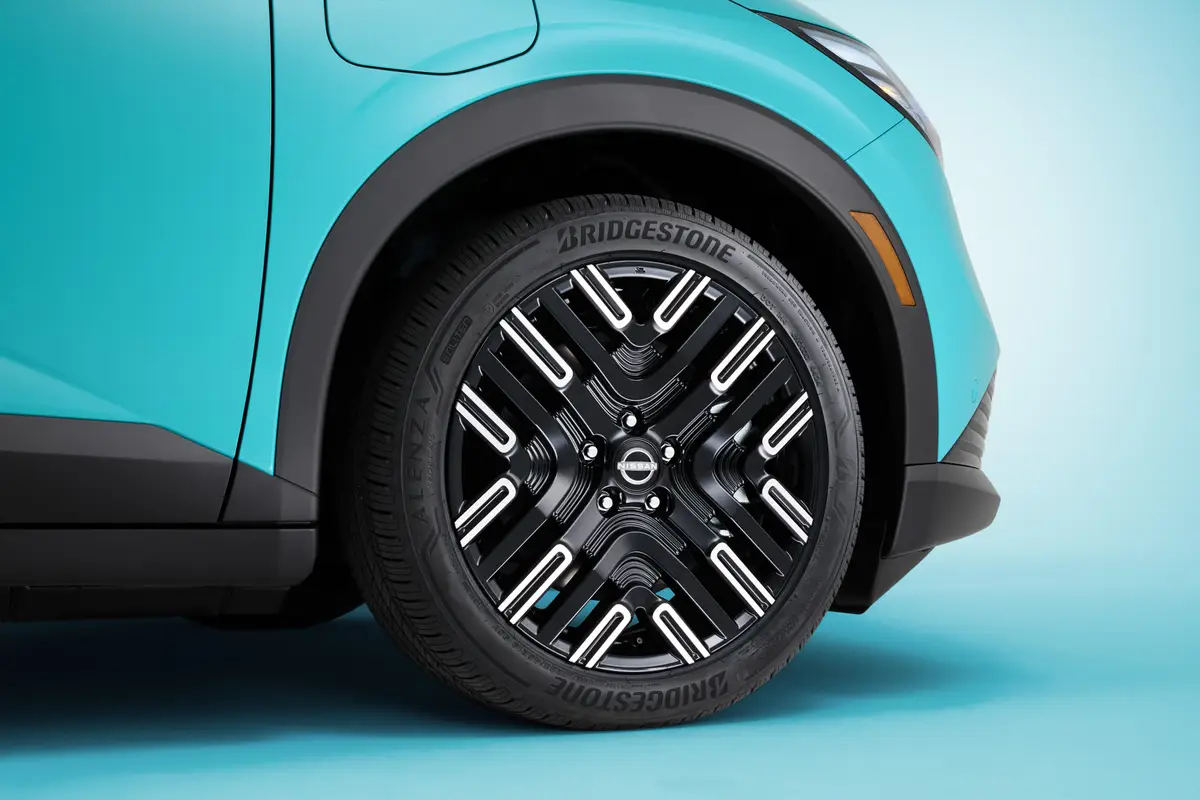
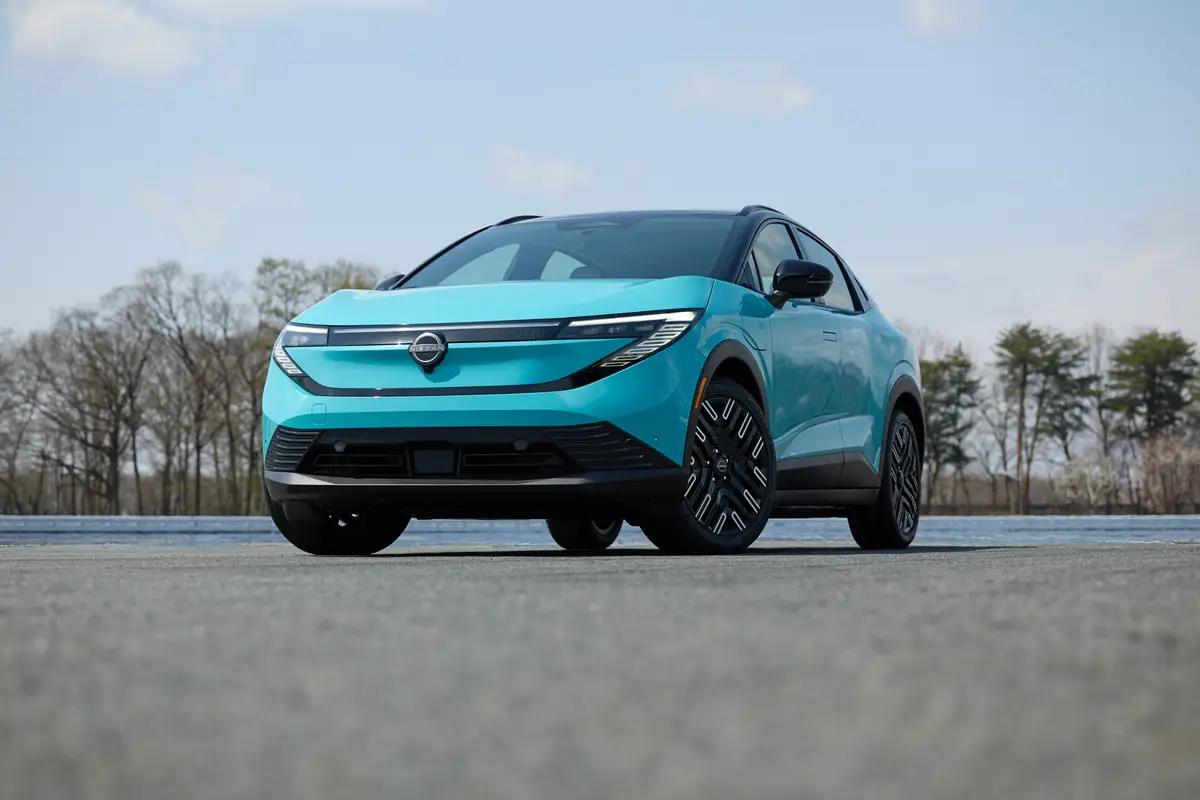
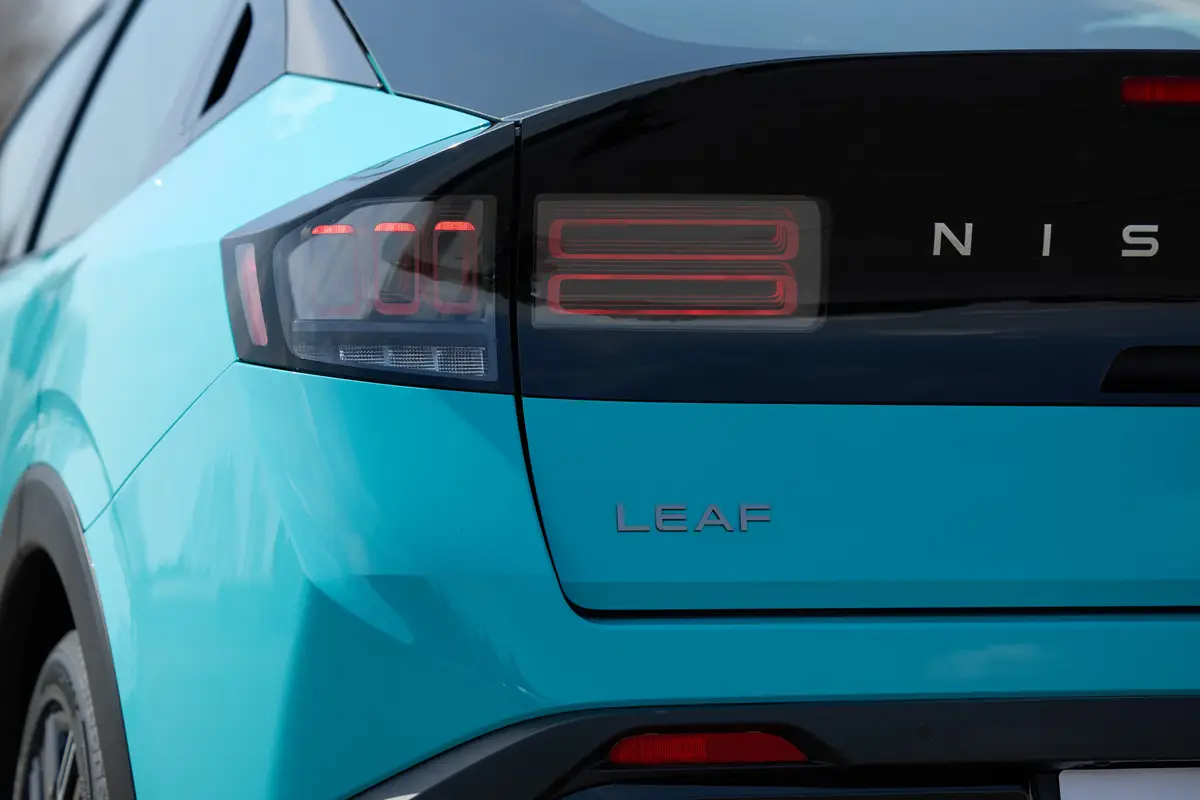

























Improved Charging Capabilities
The second major complaint that the new Leaf fixes is the current Leaf’s CHAdeMO charging port, which is a charger style that’s becoming harder and harder to find. In its place for 2026 are two ports: a J1772 port on the driver’s side for home charging and Level 2 public-charger use and a Tesla-style North American Charging Standard port on the passenger side for even faster charging. NACS is the industry standard that many automakers are now moving to, opening up use of Tesla’s more widely available Supercharger DC fast-charging network. The new Leaf is also the first Nissan to support plug-and-charge tech, further simplifying charging by automatically handling payments for public chargers as soon as you plug it in.
Nissan claims that the new Leaf can charge at speeds of up to 150 kWh, taking the battery from a 10% to 80% state of charge on a compatible DC fast charger in 35 minutes. The automaker also went to additional lengths to improve cold-weather charging and performance, sealing the battery pack in a resin cover and capturing extra heat from the onboard charger and motor to help keep the battery at its optimal temperature. An energy-efficient heat pump comes standard for interior climate control, and buyers in colder climates can also spec an additional battery heater to warm the battery for better charging performance.
Those who live in places with shaky power grids may find another feature of the new Leaf attractive, too: 1,500 watts of bidirectional vehicle-to-load capability, which enables owners to power things with the Leaf’s battery using an adapter.
What Does the 2026 Nissan Leaf Look Like?
With the move to a crossover came a thorough design overhaul, with the Leaf’s exterior featuring a Z-car-like, katana-blade-inspired molding down the upper edge of the roof. Nissan also worked in various Easter egg combos of two horizontally aligned rectangles and three perpendicularly aligned rectangles. This motif stands for the numbers “2-3,” which is pronounced “ni-san” in Japanese, and it’s a running theme throughout the Leaf’s lighting elements, wheel designs and cabin design. Eighteen-inch wheels come standard, with the Platinum+ trim having its own 19-inch wheel design. Buyers can also option the front of the car with an illuminated Nissan emblem and a full-width daytime running lamp.
The design overhaul extends to the interior, as well, with the new Leaf embracing trendy minimalism for a pared-down look that feels open and airy. That downsized powertrain allowed for some of the Leaf’s climate system to move under the hood, freeing up more cabin space. Nissan also relocated its shifter controls to the dashboard to slim down the center console and claims that its redesigned seats allow for more second-row knee room. Despite its small footprint, Nissan claims that there’s up to 55.5 cubic feet of space behind the backseat, plus additional storage under the cargo area’s floor. A removable organizer is available for drivers who want their under-floor cargo to be a little more secure.

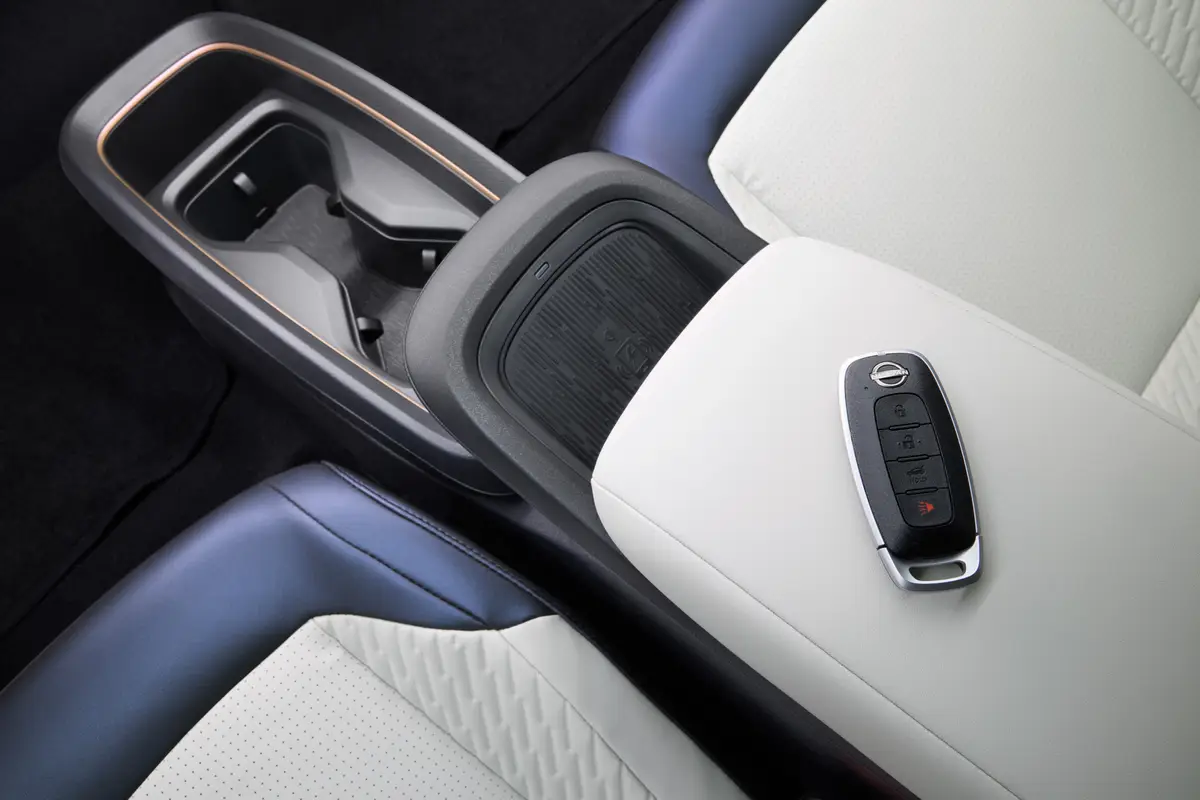
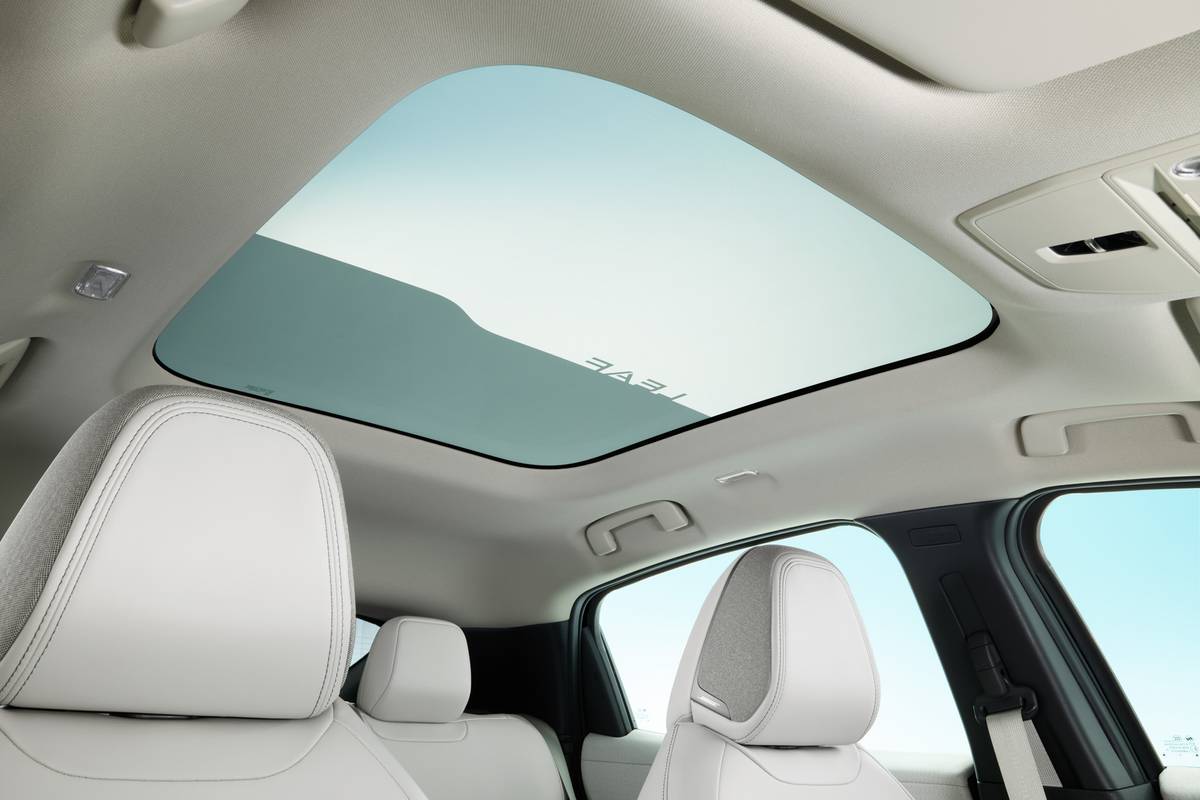
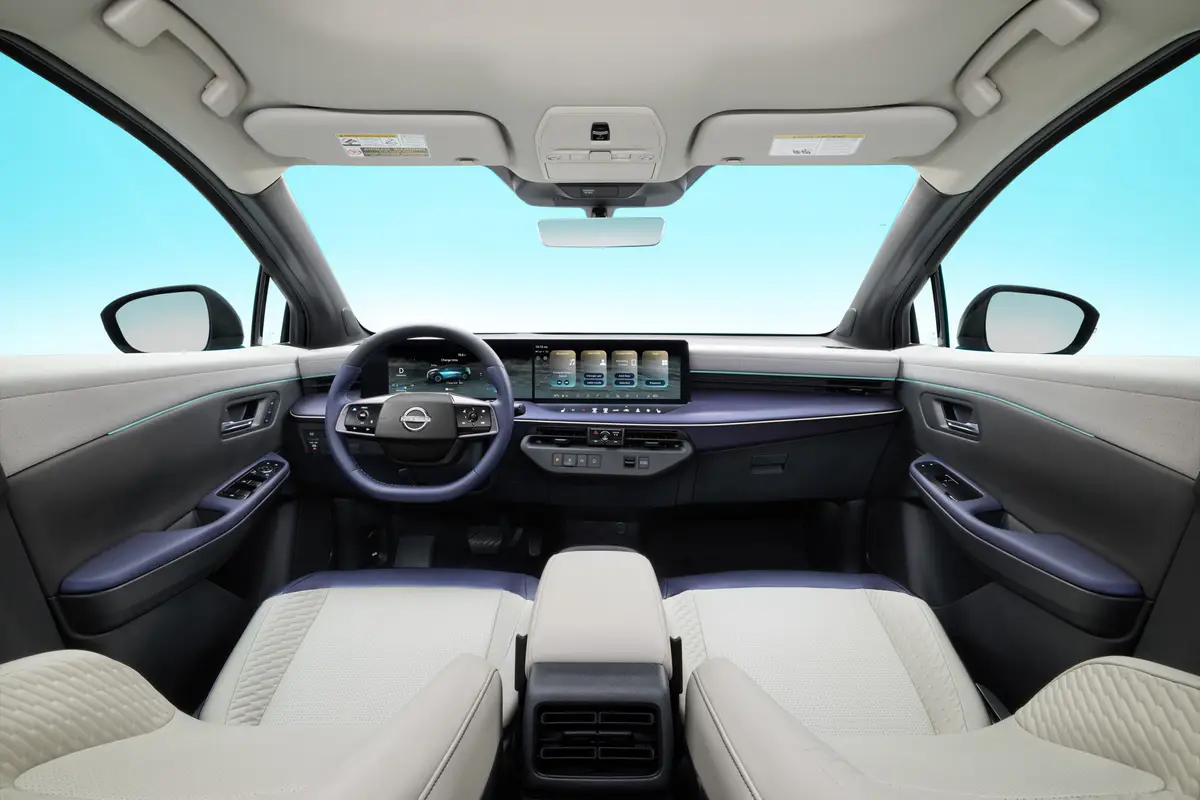
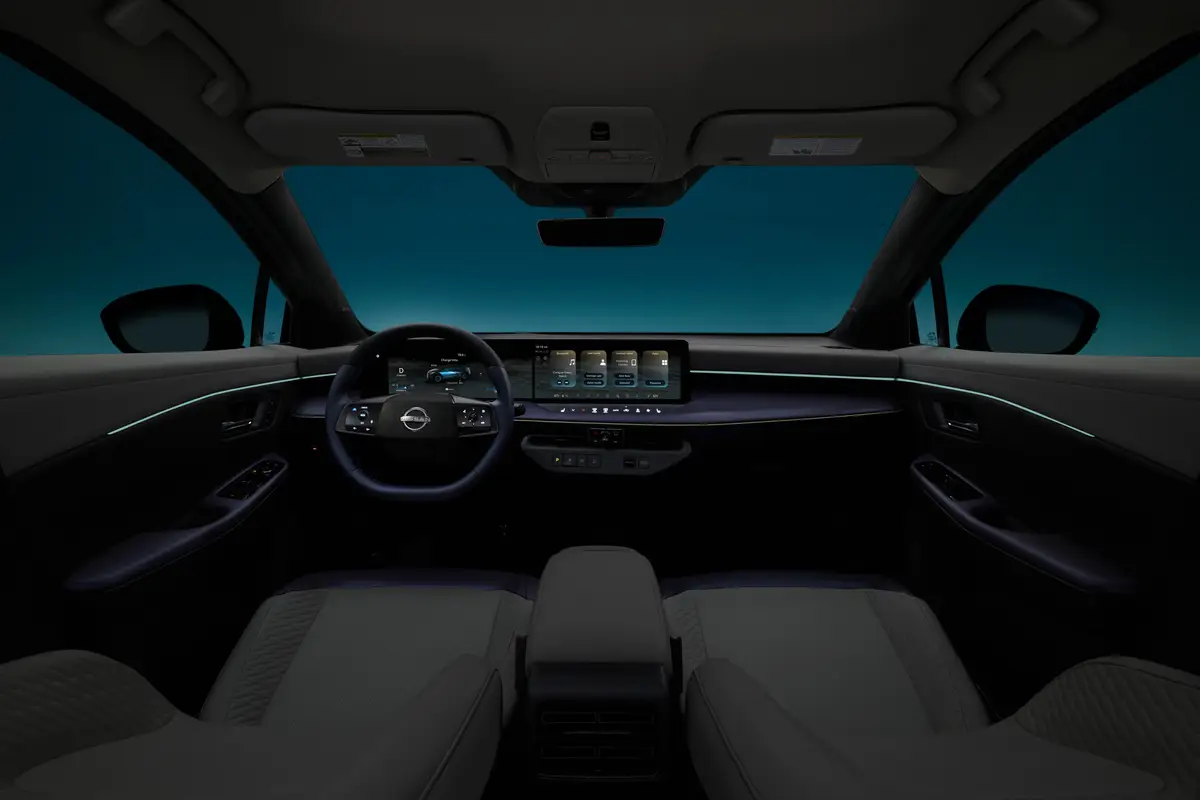

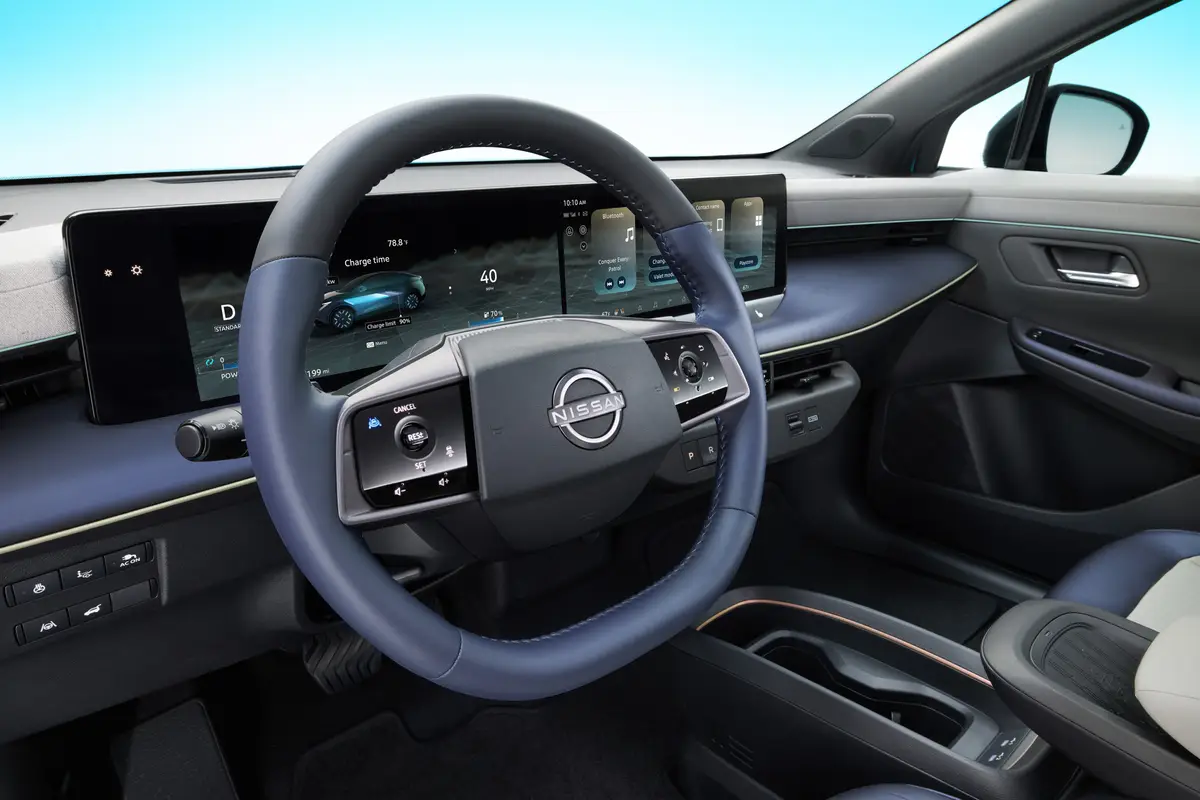
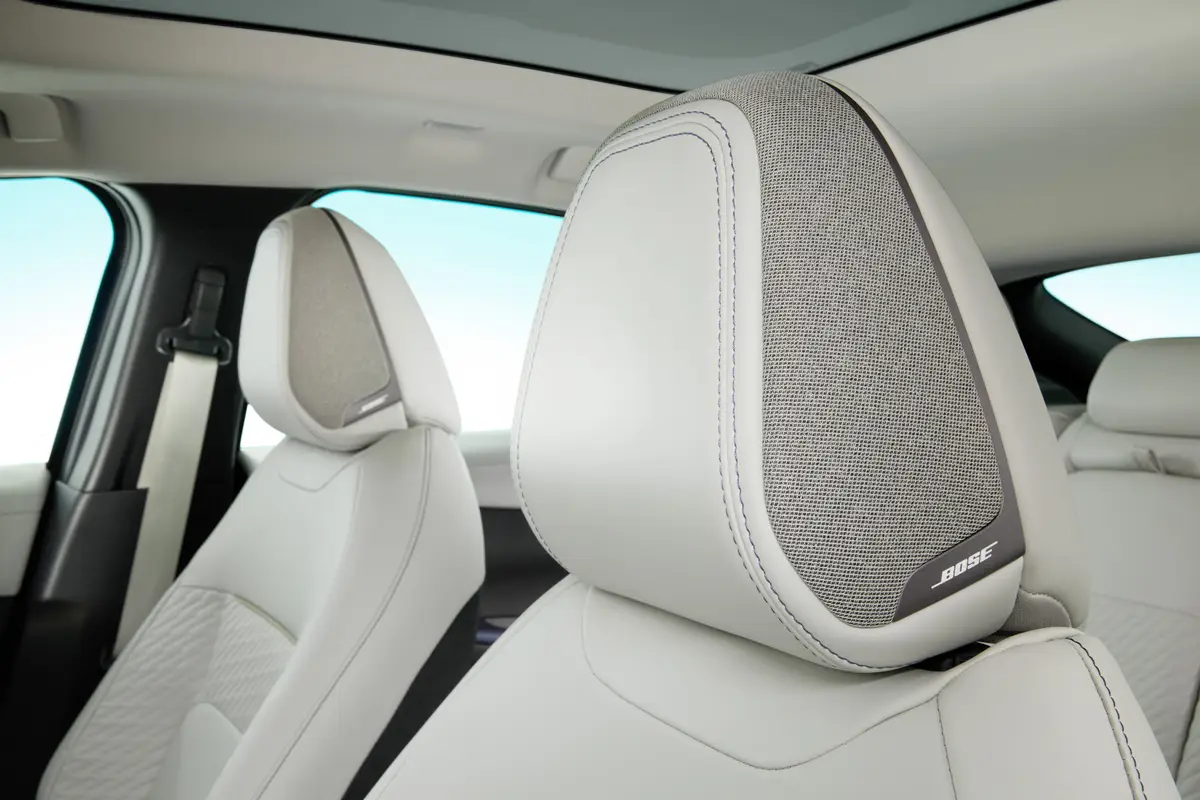
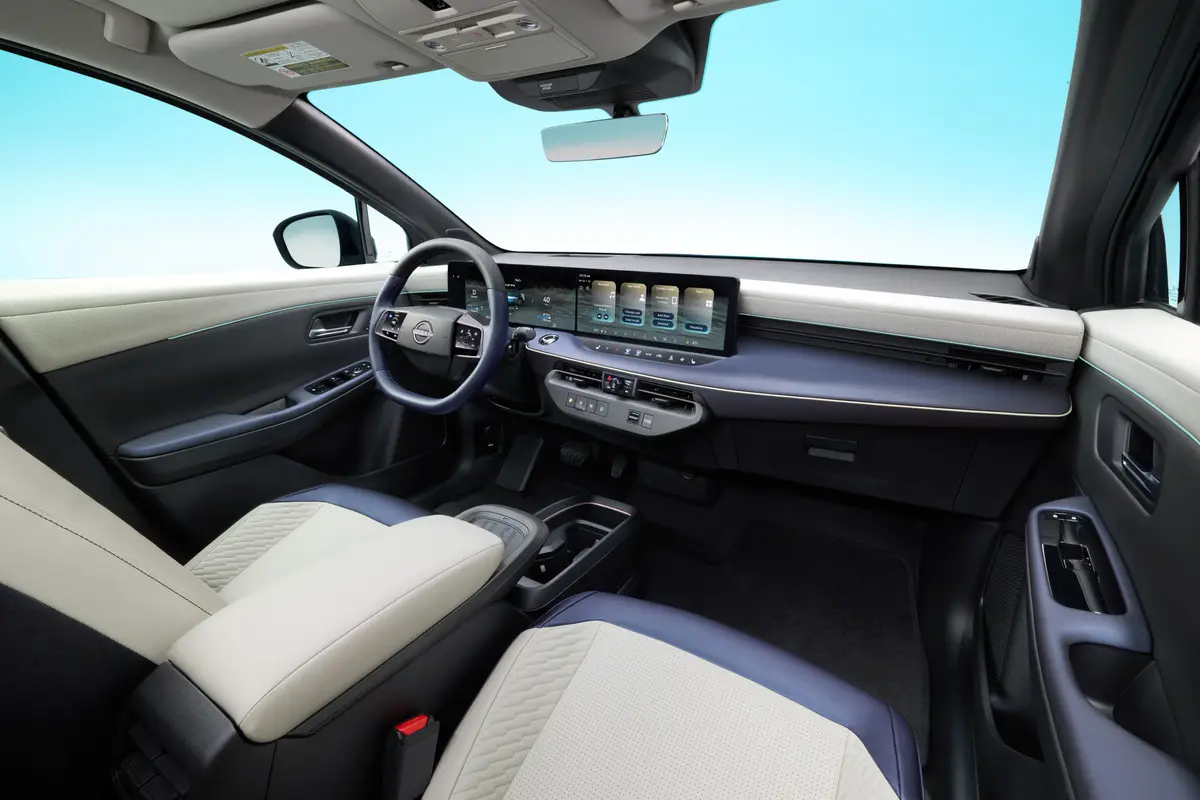









For buyers who want the Leaf to feel even more open inside, an electrically dimming panoramic moonroof is available. The Platinum+ trim also offers 64-color customizable ambient lighting for cool night-light effects.
All trims get a pair of screens up front, with the base S and S+ getting dual 12.3-inch screens, while the SV+ and Platinum+ get dual 14.3-inch displays. Wireless Apple CarPlay and Android Auto are standard. The infotainment system utilizes Google Built-In, enabling you to run popular services like Google Maps, Google Assistant and the Google Play Store natively on the car. Google Maps will also suggest charging stations on your route and will predict the vehicle’s state of charge at its destination, which should come in handy now that the Leaf has more range for road trips.
Two front USB-C ports for charging are standard, and the higher SV+ and Platinum+ trims get two more USB-C charge ports in the rear and a wireless phone charger. The Platinum+ trim also gets an upgraded 10-speaker Bose audio system, which features speakers in the front-row head restraints.
Which Safety Features Does the 2026 Nissan Leaf Include?
The new Leaf comes standard with Nissan’s ProPilot Assist, which combines adaptive cruise control and lane-centering steering, as well as the Nissan Safety Shield 360 suite of driver assists, which includes lane departure prevention, blind spot collision avoidance, automatic emergency braking with pedestrian detection, forward collision warning and rear cross-traffic alert. A new system called Secondary Collision Mitigation Braking also applies the brakes when an airbag control unit detects a collision in order to reduce the severity of a crash or to help prevent an additional crash after the initial impact.
The Leaf comes standard with useful camera views, as well, including a wide-angle front view, the Invisible Hood View that allows drivers to get a closer view of what’s in front of the vehicle (for lining up to car wash tracks, for example) and a 360-degree camera with eight selectable angles to choose from if the driver needs a closer view of something next to the vehicle.
What Is the 2026 Nissan Leaf’s Release Date and Pricing?
The 2026 Nissan Leaf arrives at dealerships in fall 2025. Pricing will be announced closer to the start of sales.
More From Cars.com:
- Nissan’s Second Drop on Next-Gen Leaf: Powertrain and Platform
- Nissan Starts Trickling Out Details on Redesigned 2026 Leaf EV
- New Mitsubishi EV Based on Nissan Leaf Coming to U.S. in 2026
- Nissan, Infiniti Outline Plans for New Models, Tech Updates Through 2027
- Find Your Next Car
Related Video:
Cars.com’s Editorial department is your source for automotive news and reviews. In line with Cars.com’s long-standing ethics policy, editors and reviewers don’t accept gifts or free trips from automakers. The Editorial department is independent of Cars.com’s advertising, sales and sponsored content departments.

Former News Editor Stef Schrader joined Cars.com in 2024 but began her career in automotive journalism in 2013. She currently has a Porsche 944 and Volkswagen 411 that are racecars and a Mitsubishi Lancer GTS that isn’t a racecar (but sometimes goes on track anyway). Ask her about Fisher-Price Puffalumps.
Featured stories
